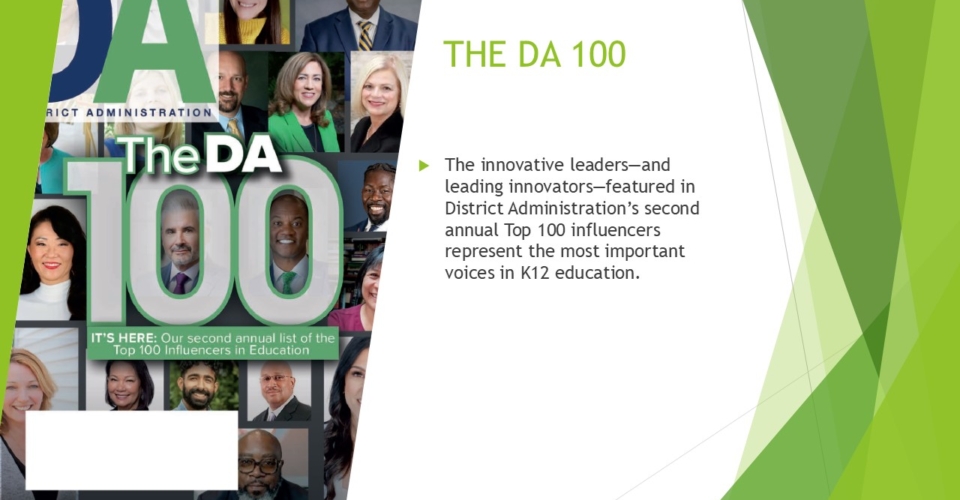As NAEP reading scores continue to decline among 4th- and 8th-graders, district leaders across the country are seeking strategies to close achievement gaps and help students become fluent readers.
In our 2024 Speak Up Survey, school principals expressed that two of the most significant challenges keeping them up at night were closing the achievement gaps in their school and supporting teachers dealing with increased workload due to the diversity of student needs.
A solution may just be as easy as changing book formats. According to a nationwide research study conducted independently by Project Tomorrow on behalf of Thorndike Press, providing students with large print books is a reading intervention that is effective, easy to implement and addresses the challenges students themselves identify.
More from DA: States now falling in line with DEI order; resistance remains
Roughly 1,500 students in grades 4-12 and 56 teachers and librarians across 13 U.S. elementary, middle and high schools participated in the study during the 2023-2024 school year.
The large print books students read are printed in a 16-point font with high-contrast black ink and increased space between lines and paragraphs on high-opacity paper that keeps the books similar in size to standard print editions. My research findings showed that changing to this format improved literacy development for all students, regardless of their reading levels or learning differences.
Large print books support literacy for all
One of the most striking takeaways from the study was how large print books helped a wide range of students, whether they were seniors in AP English or 4th graders reading below grade level. In fact, 87% of teachers reported that large print books had a positive impact on their students’ reading success.
For example, a majority of teachers reported that students diagnosed with ADHD showed increased participation in classroom read-aloud activities and were able to sustain their reading longer. Reading large print books improved reading comprehension, confidence and letter and word recognition.
The same was true for students reading below grade level: 77% of teachers saw increased reading comprehension among these students. As one 10th-grade special education teacher from Illinois put it: “Many of my students struggled with confidence and were not very engaged readers at the start of this school year. I feel that I have been able to meet their need to become confident and fluent readers by using large print books.”
Achievement gains were particularly evident at Marco Forster Middle School in California. For students who read the large print books, the number of those reading at or above grade level increased by 28% based on iReady reading assessments. The number of students reading at two or more grade levels behind their peers decreased by 33%.
Increasing engagement in reading
The improved experience students had with a large print book changed the reading paradigm for many. They saw value in reading comprehension, being a good reader, and their improved proficiency increased their enjoyment of reading.
An overwhelming 89% of students in grades 6–12 in the study group said they enjoyed reading large print books, and 48% of high school students said they were more engaged in reading the books than their other school books.

A 10th-grade classroom teacher from California reported that when she switched to large print books, “Students seemed far more engaged and far less intimidated by the text. When I opened the book and showed it to them, the physical response was far more positive and interested. Students stayed engaged during class reading time far more than when I’ve used small-print books.”
High student demand for large print
Not only did students stay engaged, but they came to recognize that large print helped them better retain what they read. I recall one student saying, “These large print books have a lot more details in them than the regular print books, right?”
I explained that the books have exactly the same text as the standard editions, but with large print, the student read more closely because the book was more physically welcoming.
This embrace of large print was reflected in students’ desire for access to more of them: 75% of grade 6–8 students and 86% of grade 9–12 students wanted more access to large print books in their schools.
A ‘no-lift intervention’
Teachers and librarians also expressed a great deal of enthusiasm for large print. In fact, 100% of teachers said it would be valuable to have more large print titles easily accessible to students in classroom libraries.
For district leaders wary about adding one more thing to teachers’ overcrowded plates, the adoption of large print books has proven to be an effective intervention that doesn’t require the district to hold any new professional learning. They don’t require a change to the curriculum, instructional practice or assessment methodologies, or require tutors or additional staff. All that’s needed is student access to these books.
In the beginning of the study, only 23% of the teachers said they were very familiar with using large print text to support student reading development. At the end of the school year, 79% said they were comfortable now using large print with their students—without receiving any training.
Overall, the findings confirm that large print books have a significantly positive impact on students’ literacy development, leading them to feel confident and have less anxiety about reading in the classroom. Having heard so many students, teachers, and librarians extolling the many benefits of large print, I hope that districts consider incorporating these books into their resources.
By making literacy more accessible and engaging, large print bridges the achievement gap and fosters a more equitable learning environment for all students.



